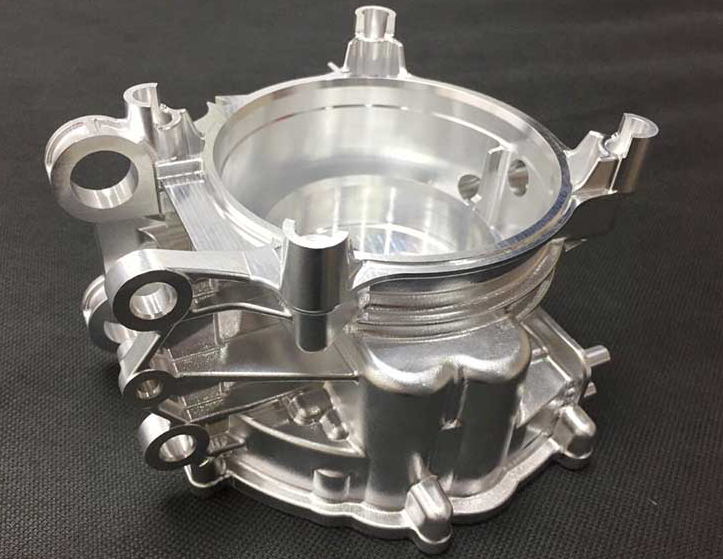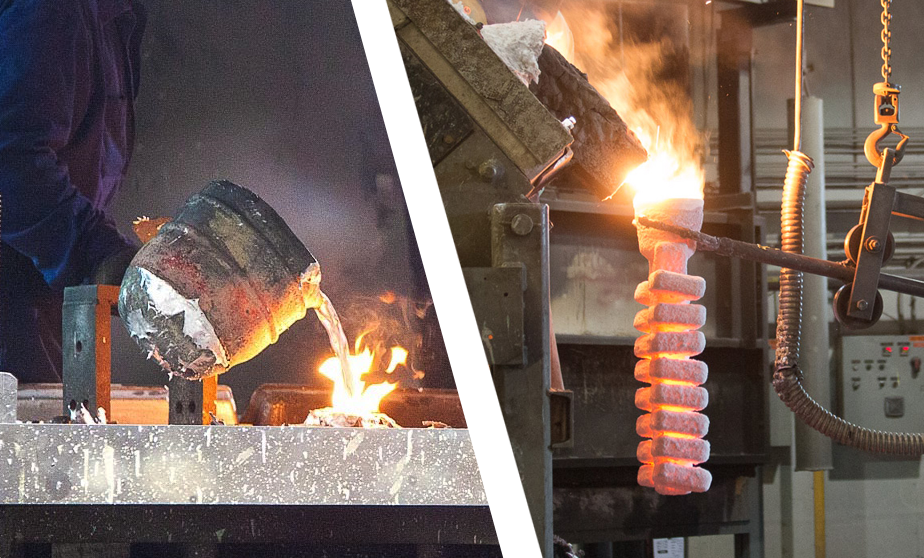Unknown Facts About Stahl Specialty Company
Unknown Facts About Stahl Specialty Company
Blog Article
The Ultimate Guide To Stahl Specialty Company
Table of ContentsNot known Factual Statements About Stahl Specialty Company Stahl Specialty Company Things To Know Before You BuyA Biased View of Stahl Specialty CompanyStahl Specialty Company Things To Know Before You BuyNot known Factual Statements About Stahl Specialty Company Stahl Specialty Company for Beginners

If you're making a metal product, you have actually likely thought about utilizing aluminum as the base product. Pure aluminum has actually restricted applications, so it is typically integrated with various other elements, such as silicon, magnesium, and manganese to form alloys.
Different components and quantities generate a vast selection of desirable physical and chemical properties. And the Aluminum Association (AA), based in North America, has actually developed specifications that manage aluminum alloys' structure, residential properties, and language. There are two types of light weight aluminum alloys wrought and cast. Shop employees form these alloy types in various methods, which considerably affects their characteristics.
Not known Factual Statements About Stahl Specialty Company
Cast light weight aluminum alloys are made by melting pure aluminum and incorporating it with various other steels while in fluid form. The mix is put right into a sand, pass away, or financial investment mold and mildew. After solidification, the steel is gotten rid of from its mold and mildew. At this stage, it is in either its last form or as a billet or ingot for more processing.

For instance, 160.0 represents a cast with a minimum of 99.60% light weight aluminum. The fourth number, which follows the decimal factor, specifies if the alloy is a casting (xxx. 0) or an ingot (xxx. 1). Wrought light weight aluminum alloys also start by integrating liquified aluminum with other metals. In comparison to cast alloys, nonetheless, they are formed into their final form via procedures such as extrusion, rolling, and bending after the metal has actually strengthened into billets or ingots.
There are many small differences between wrought and cast light weight aluminum alloys, such as that cast alloys can consist of a lot more substantial amounts of other metals than functioned alloys. The most noteworthy difference between these alloys is the manufacture procedure with which they will go to deliver the final product. Other than some surface treatments, cast alloys will exit their mold in practically the precise strong kind desired, whereas functioned alloys will certainly undergo several adjustments while in their solid state.
If you believe that a wrought alloy may be the ideal for your project, have a look at some of our short articles that discuss more regarding certain functioned alloys, such as Alloy 6061 and Alloy 6063. On the various other hand, if you think a cast alloy would be much better for you, you can discover much more about some actors alloys in our Alloy 380 and Alloy 383 posts (coming soon).
The 3-Minute Rule for Stahl Specialty Company
When choosing a light weight aluminum foundry for your production demands, it's crucial to research several aspects. Among the most important aspects to think about is the experience and skills of the foundry. Aluminum Casting. Selecting a factory that has the right understanding of the light weight aluminum spreading procedure, and the profile to show for it, helps to have a successful result for your task
Having the experience and industry knowledge to engineer your castings for ideal manufacturing and quality results will certainly simplify the project. Producing aluminum spreading calls for a facility set of processes to attain the best results. When choosing a new light weight aluminum shop to partner with, ensure they have substantial sector experience and are knowledgeable regarding all elements of the light weight aluminum spreading procedure: style, production, material analysis, and product screening.
The shop needs to additionally have a tried and tested record of delivering phenomenal items that satisfy or surpass client expectations. Quality control should additionally go to the top of your listing when selecting an aluminum shop. By collaborating with a qualified foundry that adheres to the requirements for high quality control, you can safeguard the integrity of your item and guarantee it fulfills your specs.
By selecting a company who offers services that meet or surpass your item requirements, you can be sure that your task will be finished with miraculous precision and performance. Particular light weight aluminum shops focus on particular types of making procedures or casting approaches. Various components need different manufacturing strategies to cast aluminum, such as sand spreading or pass away spreading.
The 15-Second Trick For Stahl Specialty Company
Pass away spreading is the name given to the procedure of developing complicated metal components through usage of mold and mildews of the element, also known as passes away. It generates even more elements than any kind of various other process, with a high degree of precision and repeatability. There are three sub-processes that fall under the classification of die spreading: gravity die casting (or irreversible mold spreading), low-pressure die spreading and high-pressure die casting.
No matter the sub-process, the die spreading process can be broken down right into six actions. After the pureness of the alloy is checked, dies are developed. To prepare the passes away for casting, it is important that the passes away are clean, so that no deposit from previous manufacturings remain. After cleansing, the ejection lubrication is applied to the die to guarantee a smooth launch.
Some Known Factual Statements About Stahl Specialty Company
The pure steel, additionally called ingot, is included in the furnace and maintained at the molten temperature level of the metal, which is then moved to the injection chamber and infused right into the die. The stress is then preserved as the metal strengthens. Once the metal solidifies, the cooling process starts.
(https://urlscan.io/result/0195897f-20fd-7001-a6ac-ce9798aafe78/)
The thicker the wall surface of the component, the longer the cooling time due to the fact that of the quantity of interior metal that also needs to cool down. After the element is completely cooled, the die halves open and an ejection mechanism presses the element out. Complying with the ejection, the die is closed for the next shot cycle.
The flash is the extra product that is cast during the procedure. Deburring read this eliminates the smaller items, called burrs, after the trimming procedure.
4 Easy Facts About Stahl Specialty Company Described

Zinc is one of the most previously owned alloys for die spreading due to its lower price of raw materials. Its corrosion resistance additionally enables the parts to be long lasting, and it is one of the extra castable alloys due to its lower melting factor.
As pointed out, this alloy is one of one of the most typically used, yet produces will, at times, choose aluminum over zinc because of light weight aluminum's manufacturing benefits. Aluminum is highly affordable and one of the extra functional alloys. Aluminum is used for a variety of different items and industries anything from home window structures to aerospace materials.
Report this page